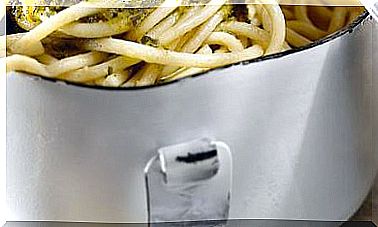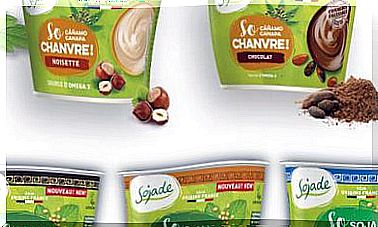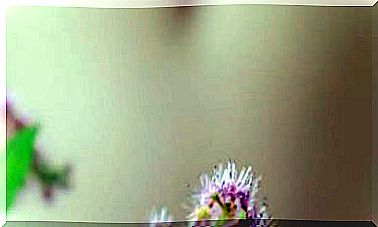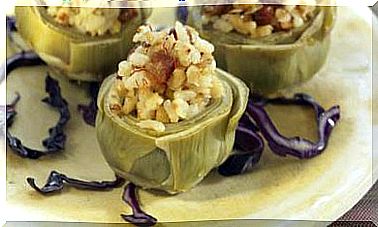The 30 Cleanest Foods And The 12 Dirtiest
There are resistant foods that require less pesticides than others. Find out which ones are the least contaminated and remember to eat organic food whenever you can.
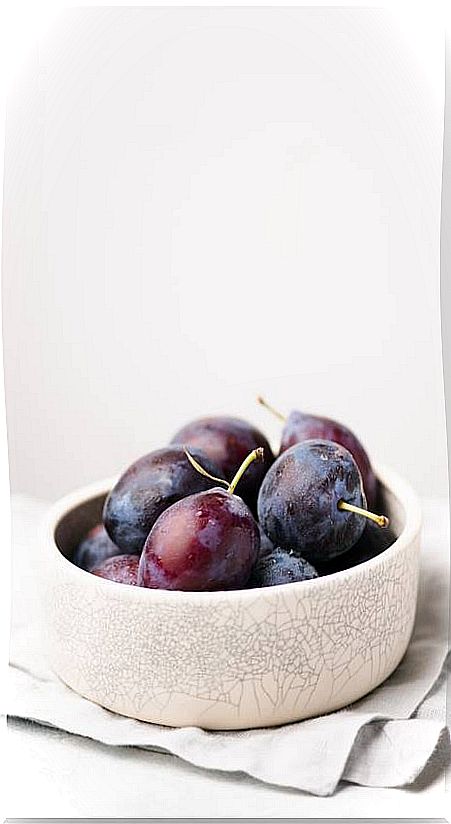
The presence of pesticides is not the same in all foods. The ecological ones are practically free, except accidental contamination. Seasonal foods tend to contain less than those grown in out-of-season greenhouses and imported foods.
Some foods are especially resistant to pests and do not require many chemicals, even in conventional agriculture. On the other hand, others accumulate waste because they are subjected to various treatments.
Taking all this into account we can make a list of the “cleanest” and “dirtiest” foods. But remember that organic, seasonal and local foods are always the best option. To prepare the following list we have used the reports published by the EFSA (European Food Safety Agency).
The 12 foods most loaded with pesticides
- Celery. Pesticides are found in 85% of the samples analyzed in France. In the EU as a whole, the values are over 70%, with high levels of samples that are above the authorized values and with multi-residue.
- Strawberries. 64% of the samples contain multi-residue, and in 78% of the strawberries tested in the EU, pesticide residues. In Spain, more than 20 different pesticides have been detected; a quarter are endocrine disruptors.
- Lettuce 58% of lettuces in the EU have pesticide residues, 37% of which are multi-residue, with a maximum of 12 different pesticides. In Spain, pesticides have also been detected, and some are endocrine disruptors.
- Apples In Spain, more than 30 different pesticides have been detected, half of them endocrine disruptors. In the EU, 63% have residues, 42% more than a different one, and in a single sample up to 10 different pesticides have been found.
- Peaches Only 22% of the samples are residue free. and 60% contain more than one. Up to 13 different samples have been found in a single sample. In Spain, up to 11 pesticide residues with endocrine effect have been detected.
- Oranges 70% of samples in the EU have residues (up to 12 different pesticides in one sample). In Spain, residues of up to 14 endocrine disrupting pesticides have been found. The residues are located mainly on the skin.
- Pears It is the fruit with the most pesticide residues with endocrine disrupting effect in Spain. In the EU, only 28% of samples are pesticide-free. 60% contain more than one pesticide residue (some with 12 different pesticides).
- Peppers. It is among the vegetables with the most waste in Spain. In the EU, 48% of the samples have residues, 24% more than one (up to 11 different ones were found in one sample). It always stands out for exceeding 10 different wastes.
- Bananas 73% of the bananas analyzed in the EU have pesticide residues, and 59% with multi-residues. In Spain, numerous pesticide residues have been found in bananas, some of them endocrine disruptors.
- Tea. All tea consumed in the EU comes from countries where the use of banned pesticides is allowed here. Around 20% of the analyzed samples contain residues that exceed the accepted limits in the EU.
- Tomatoes. The vegetable with the most different pesticides detected in Spain. In the EU, 54% of the samples have residues. It is the food with the most different residues found, 91 in total. In a single sample, 12 were found.
- Grapes. In Spanish, up to 29 pesticide residues have been found, 10 of them endocrine disruptors. 78% of EU samples contain residues, 58% of which more than one (up to 19 residues found in a single sample.
The 30 foods with the least pesticides
Fruits
- Avocados Although it is not analyzed in the EU, in Spain only residues of an endocrine-disrupting pesticide have been found. In France, 67% of the samples analyzed do not contain pesticides
- Persimmons In Spain, only residues of a pesticide have been found, and in the EU analyzes, 75% do not contain residues
- Plums Only 3 different pesticides were detected in samples of this fruit in Spain. In France, 35% of the samples contain pesticides and it is the third fruit with the least residues, after avocado and kiwi.
- Grenade. 70% of the samples tested in the EU do not contain residues. In Spain, only one endocrine disruptor pesticide has been found.
- Figs 78% of the samples tested in the EU are pesticide-free. Kiwis 66% of the samples analyzed in the EU do not contain pesticide residues. In France, 75% of the samples are free.
- Medlar. Only two pesticide residues have been found, none with endocrine disruptor activity. This fruit is not analyzed at the EU level.
Vegetables
- Chard. 63% of the EU samples do not contain residues. In Spain, only one type of pesticide has been detected.
- Artichokes 76% of the samples do not contain residues. In Spain, 4 types of pesticides have been detected, two of them are endocrine disruptors.
- Sweet potato. 56% of the EU samples do not contain residues. In France, residues have only been found in 7.4% of the samples analyzed.
- Pumpkin. 78% of the analyzed samples do not contain residues in the EU. In France, this percentage rises to 86%.
- Onions. Only 8% of the onion samples analyzed in the EU contain pesticide residues, a figure that coincides with the results obtained in France. In Spain, residues of 12 different pesticides have been found, 7 of them with endocrine disrupting effects.
- Cauliflower. 92% of the samples tested in the EU as a whole are free of pesticides. In Spain two different pesticides are detected, both endocrine disruptors.
- Asparagus. Only one type of pesticide has been found in Spain. In France, only 3% of the analyzed samples contain pesticide residues.
- Fennel. 55% of the samples tested in the EU are residue free.
- Turnip. 68% of the samples tested in the EU are residue free.
- Beetroot. In Spain, only one type of pesticide has been detected. In France, only 4.4% of samples contain pesticide residues
- Cabbage. In Spain, residues of 2 pesticides have been found in the analyzed samples. In analyzes carried out in the EU, 85% do not present pesticide residues.
Vegetables
- Green peas. 75% of peas without pods in the EU are residue free. In Spain 3 types of pesticides have been detected, all 3 are endocrine disruptors.
- Bean. 91% of the samples tested in the EU are pesticide-free. In Spain no more than 3 different pesticides are detected.
- Lentils. 69% of the EU samples do not contain residues. In Spain, only one type of pesticide has been detected.
Cereals and pseudo-cereals
- Sweet corn. Although it is basically consumed in salad, it is the cereal with the least pesticide residues. Less than 2% of the analyzed samples contain residues.
- Buckwheat. 80% of the samples tested in the EU are pesticide-free.
Nuts and seeds
- Almonds There is no data for each dried fruit and they are not analyzed in the EU, but in general, as they have a shell, they have fewer pesticides.
- Hazelnuts In Catalonia, for example, only 17% of the samples of peeled dried fruit, such as avelllana, had residues.
- Walnuts. They tend to present few pesticides for the protection of the shell, but they are used to cultivate them and they damage the environment.
- Flax seeds. 72% of EU samples are residue free.
- Sunflower seeds. 78% of EU samples are residue free.
Elaborated
- Canned vegetables. The washing and peeling process prior to storage removes much of the pesticide residue. In canned tomatoes and peppers, their presence is considerably reduced, although one or two are still found.
- Olives 70% of the samples are free of residues. In Spain, 2 types of pesticides have been found, one of them disruptive.
